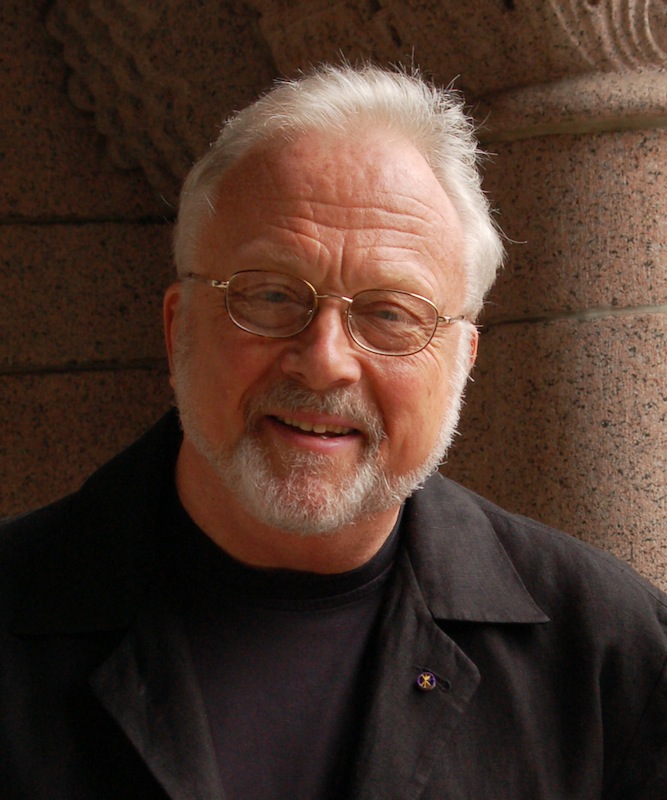Two American concertos receive strong advocacy at Philharmonic Biennial

William Bolcom’s Trombone Concerto was given its world premiere by soloist Joseph Alessi and the New York Philharmonic Friday night.
The New York Philharmonic’s 2016 Biennial festival is coming to a close with the orchestra playing a series of concerts under music director Alan Gilbert. Friday night at David Geffen Hall, the penultimate concert offered two contemporary concertos from American composers, one a New York premiere, the other a world premiere.
Making the program more acutely unique were the solo instruments, with the debut of William Bolcom’s Trombone Concerto and John Corigliano’s Conjurer, a percussion concerto originally written for Evelyn Glennie and premiered in 2007.
With just those two pieces on the program, there was time for each composer to step out front and talk genially and informatively about their works.
For fans of the trombone, a wonderful instrument that has been the object of musician jokes since the sackbut era, Bolcom’s remark that “The trombone is very well able to defend itself,” was particularly welcome. The crowd was relatively small but was fleshed out by over 100 trombonists, in town for the International Trombone Festival—Bolcom asked them to stand before the music began. They gave their colleague Joseph Alessi, the orchestra’s principal trombonist and evening’s soloist, a warm welcome.
Alessi has a versatile tone, which ranges from a mellow amber to a cracking, hard-edged silver, and that brings out the best in the instrument. Bolcom’s writing does as well, and the concerto clearly sounds like the work of a composer who has a deep appreciation for the trombone.
Bolcom is a fine composer, with music that provides classical sophistication and concert-hall structure to the Great American Songbook, jazz, and blues. His Trombone Concerto—co-commissioned by the Philharmonic—is a prime example. In three movements, the piece nods at Beethoven and Renaissance vocal music in the first movement. Titled “Quasi una fantasia,” it is full of modal counterpoint and chorales. The middle movement has a blues in 6/8 time and concludes with some impressive orchestral jazz.
The concerto provides further conversations between soloist and orchestra, especially in the ABA form of the opening movement. In this world premiere performance Alessi navigated these with expressive ease, a true soloist in the sense of having a great deal to say through the music. In the opening movement, limpid orchestral textures gave way to a bright, brash, American music, only to turn quiet again and more brooding. There were parts that could have come from classic arrangements by Artie Shaw or Stan Kenton.
Bolcom is an excellent melodist, and the blues tune of the second movement had an unexpectedly wide, rising interval at a key point, one that became fully satisfying as the line extended. Played straight through like a song, the theme was so enjoyable that one feels the need for Bolcom to add a repeat for future performances. Alessi has a brief cadenza, extroverted at first then gradually turning inward.
The finale was a worthy companion to both Gershwin and Bernstein. Alessi was equally at home in the music, and the orchestra played with a light, sympathetic touch that culminated in the final exclamation point.
Corigliano’s work is also full of invention, and at 37 minutes massive when compared to Bolcom’s 20 minutes. But the time passes easily. Some credit goes to soloist Martin Grubinger, who is a dramatic and exciting player, fascinating to observe.
Corigliano’s concept and form are simple and refreshing. He described the challenge of writing for instruments that don’t normally stand out as solo voices—the pieces answers that by opening each of the three movements with a cadenza. Each is followed by a response in the strings, a mix of melodic phrases and harmonic rhythms that at times intriguingly hinted at Bernard Herrmann’s string music for Psycho.
Inside the ensemble music, Grubinger carved out rhythms, harmonies, and melodies. Corigliano divides the percussion into three groups, one per movement: Wood, Metal, and Skin. Beyond this, the writing has an expert understanding of the details of composing for percussion, especially how different beaters (mallets, sticks, even bare hands) can produce a variety of sounds on the same instrument.
Grubinger commanded a wide range of dynamics and carried a brilliant intensity, even at the lowest volumes. He played the music with relish and sensitivity, especially in the lovely, ringing second movement, and the driving, broken-up rhythms of the last movement. In that finale, the rhythmic pattern that starts the movement returned to bring the music home, Grubinger shaping timbre and pitch on the timpani with his hands and elbow, everything ending with one final, exhilarating slap.
The New York Philharmonic Biennial concludes 7 p.m. Saturday with the Philharmonic playing music by Pierre Boulez, Steven Stucky, and the U.S. premiere of Per Nørgard’s Symphony No. 8. nyphil.org.






